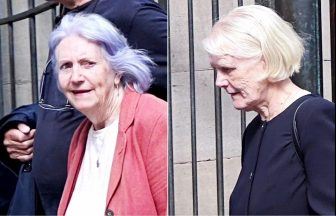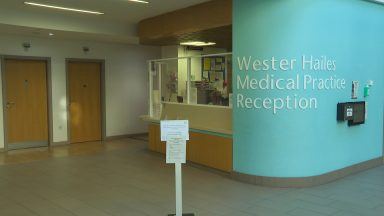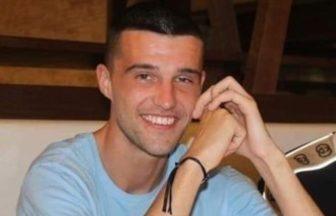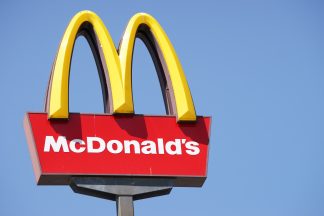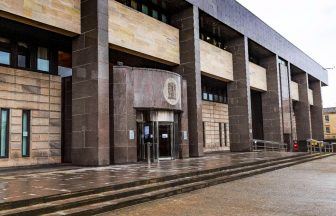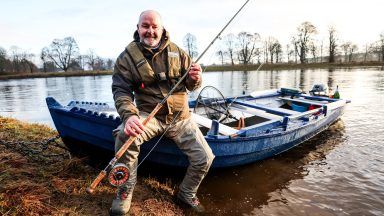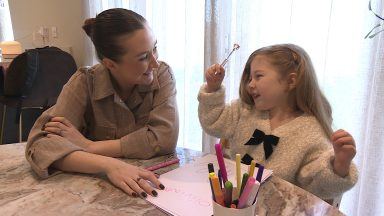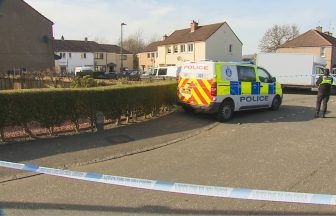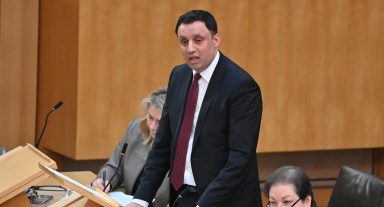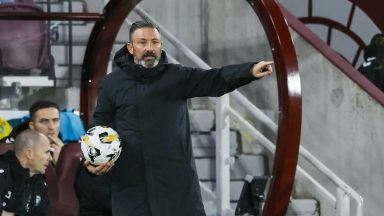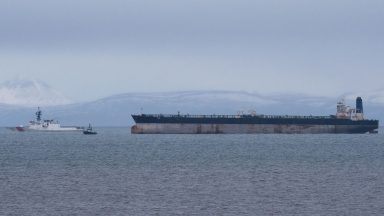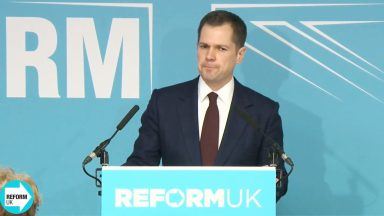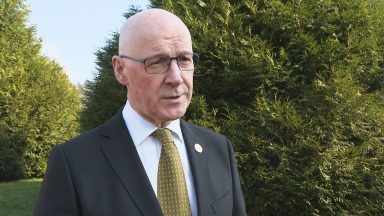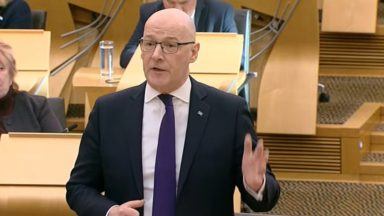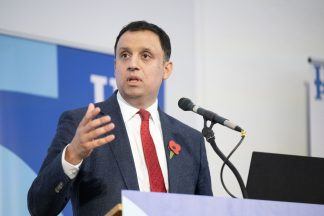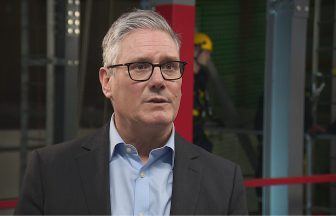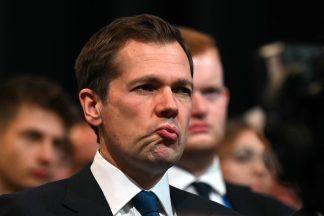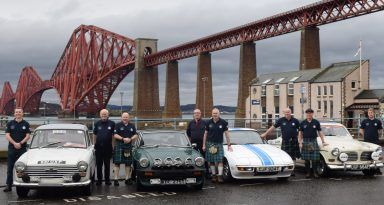There will be no election night this year. When the polls close at 10pm on Thursday the broadcasters will not hit the airwaves with through-the-night live declarations and instant analysis of what it all means.
This has been the Covid campaign and, in the aftermath, the traditional overnight count is delayed until Friday morning at 9am.
Here, STV special correspondent Bernard Ponsonby answers all your questions about what happens after the polls close.
Why is the count delayed?
Social-distancing requirements at count centres and a limit on the number of people that can tally ballots safely from each venue means that the results for the 129-seat Scottish Parliament will be staggered over two days.
It could be well into Saturday before the final shape of Scotland’s new parliament is known.
That means, as well as live rolling online coverage, STV will be on air at the key points in the day on both Friday and Saturday with a full post-results analysis show on Sunday as we ask, what now?
Is there an exit poll?
There is no exit poll for a Holyrood election. I’m actually glad about that as an exit poll, if correct, makes the marathon broadcast an exercise in bringing you, not the drama of election night, but the confirmation that the exit poll is correct.
Or not, as the case may be.
What should we look out for?
There are 73 individual constituencies in Scotland and last time around the SNP won 59 seats, the Conservatives seven seats, the Liberal Democrats four seats and Labour three seats.
When the 56 ‘additional members’ elected in eight regions were added to ensure a closer relationship between a party’s vote and seat share, the SNP ended up with 63 seats, the Conservatives 31 seats, Labour 24 seats, the Greens six seats and the Liberal Democrats five seats.
We can see from the above that the SNP are overwhelmingly dominant in the individual constituencies with Labour and the Conservatives relying on additional members from the regional areas to make up their parliamentary representation.
As the individual constituencies declare first, what should we look out for? Well, as 59 out of the 73 seats are held by the SNP, Friday will be an exercise in SNP victories if the polls are correct. If the SNP lose any seats it will suggest they could perform below their 2016 level of support, in which their case indyref2 hopes could take a bashing.
If they hold their seats it will be useful to see if their share of the vote is higher or lower than five years ago. Although the result in an individual constituency is not an exact barometer in how electors in other constituencies will behave, a number of results may well establish a pattern on whether the SNP are polling better or worse than in 2016. We should know this after the first dozen declarations.
What about the other parties?
These results can also tell us how the other parties are performing and whether there is any evidence that would suggest, for example, that Labour might overtake the Conservatives in the race for second place.
As more results come in and the national share of the vote amasses, we will have some clues as to how the election is going without having a definitive picture.
Where are the key seats?
There are number of ‘battleground seats’ which are particularly interesting to watch. There are no fewer than 37 seats that would change hands if there is a swing of 10% or less against the incumbent party.
Technically, many seats are very marginal with 16 constituencies falling on a swing of 5% or less. The polls, however, predict a comfortable SNP lead, so the more pertinent question would appear to be: which seats might the SNP gain rather than which of their marginal seats might they lose?
The nationalists have Dumbarton in their sights. A swing of 0.2% would unseat Labour’s Jackie Baillie. And a swing of just over 1% from the Conservatives to the SNP would see Edinburgh Central, Ayr and Aberdeenshire West fall. A swing of 1.5% from Labour to the SNP and Nicola Sturgeon’s party would pick up Edinburgh Southern and East Lothian.
In all of the above seats, however, there is the possibility that unionist voters cast their vote tactically for the party most likely to prevent the SNP from winning. And there are local factors that might nudge the arithmetic against a national trend.
In East Lothian, for example, Labour’s Iain Gray is standing down. At the 2019 general election, the corresponding Westminster seat was won by Kenny MacAskill for the SNP. He has, however, defected to the Alba Party. And the Labour candidate he defeated has now succeeded Iain Gray as Labour’s standard bearer.
With a sizeable Conservative vote in this seat, all three parties will argue they can win. Tactical considerations could hold the key in deciding which party wins in East Lothian. The pattern of support in this ultra-marginal might not be replicated elsewhere.
Tell me about the regions
The Scottish Greens are contesting 12 constituencies and like Alex Salmond’s Alba Party are contesting all of the eight regional areas where 56 MSPs are elected.
It will be impossible to say exactly how these parties are likely to do until the first regional area declares and that will only happen when all of the individual results within that region are known.
We will, however, get a ‘sense’ of where it might be headed as we will get access to ‘list’ votes in individual constituencies.
No regional area will declare on Friday so it will be Saturday before those parties only contesting list seats will know how they are performing.
Any other seats to watch?
We are expecting 48 constituencies to declare on the Friday from all areas of Scotland, including the two Labour marginals of Dumbarton and East Lothian.
Of course, all seats are interesting particularly if it’s where you happen to live. In Glasgow, Nicola Sturgeon’s Southside seat will declare on Friday. Scottish Labour leader Anas Sarwar is trying to unseat her. He faces an uphill task as it is the safest SNP seat in Scotland.
Look out too for Rutherglen. It is normally one of the first to declare and it will be interesting to see if there is any evidence of a backlash against the SNP.
Local MP Margaret Ferrier, who broke Covid rules, has been disowned by the SNP but refuses to resign, a factor Labour’s James Kelly will be hoping works in his favour, especially as his ranking on the Glasgow list suggests his parliamentary career is in danger of coming to an end.
In the Capital, Edinburgh Central is one to watch. It was held by Ruth Davidson for the Conservatives in the last parliament but she has quit Holyrood for the more genteel pastures of the House of Lords. Former SNP Westminster leader Angus Robertson is attempting to win and book his place at Holyrood.
How can I follow the results?
STV News will provide live rolling coverage online throughout the counting, while on TV we’ll broadcast three election specials.
We will be on air on Friday from 4pm-7pm and then again from 8pm-8.30pm. On Saturday we broadcast from 4.40pm until 6.30pm and then again on Sunday from 5.35pm until 6.30pm to digest what is all means.
The team are ready to bring you all the key highlights and interviews from the sixth sets of elections for Scotland’s Parliament. Do join us.
Follow STV News on WhatsApp
Scan the QR code on your mobile device for all the latest news from around the country






